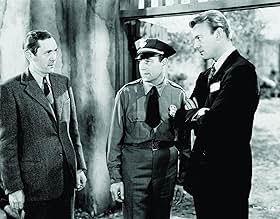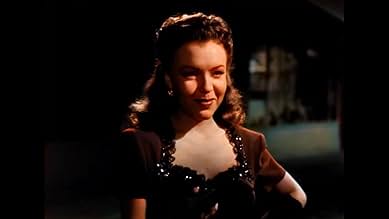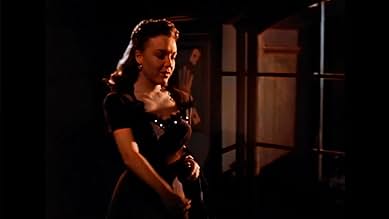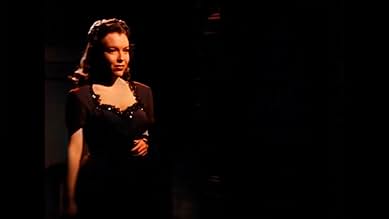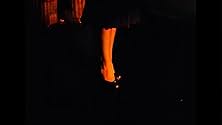IMDb रेटिंग
6.7/10
6.3 हज़ार
आपकी रेटिंग
अपनी भाषा में प्लॉट जोड़ेंA seemingly-tame leopard used for a publicity stunt escapes and kills a young girl, spreading panic throughout a sleepy New Mexico town.A seemingly-tame leopard used for a publicity stunt escapes and kills a young girl, spreading panic throughout a sleepy New Mexico town.A seemingly-tame leopard used for a publicity stunt escapes and kills a young girl, spreading panic throughout a sleepy New Mexico town.
- निर्देशक
- लेखक
- स्टार
- पुरस्कार
- 2 कुल नामांकन
Tuulikki Paananen
- Consuelo Contreras
- (as Tula Parma)
Ed Agresti
- Mexican Police Officer
- (बिना क्रेडिट के)
Robert Andersen
- Dwight Brunton
- (बिना क्रेडिट के)
Lulu Mae Bohrman
- Nightclub Patron
- (बिना क्रेडिट के)
Jack Chefe
- Nightclub Waiter
- (बिना क्रेडिट के)
David Cota
- Boy Singer
- (बिना क्रेडिट के)
Sidney D'Albrook
- Waiter Serving Helene and Dwight
- (बिना क्रेडिट के)
Rosita Delva
- Young Lover
- (बिना क्रेडिट के)
Jacqueline deWit
- Helene
- (बिना क्रेडिट के)
John Dilson
- Coroner
- (बिना क्रेडिट के)
फ़ीचर्ड समीक्षाएं
Slimly-plotted but handsomely-produced second-biller about an escaped leopard in a small dirt town in New Mexico that may be the cause of several horrific deaths...or maybe not! Intriguing premise given stylish film-noir treatment. Performances are solid, and Jacques Tourneur's crafty direction allows viewers to see just enough before fading to black. Val Lewton produced, giving the proceedings his customary spooky polish; Roy Webb's background score is predictably dramatic, though the intermittent use of dead silence is even more effective (and the castanets were a nice touch). Story tails off near the end, but film is still a minor gem. Fantastically atmospheric and fun. Based on the book "Black Alibi" by Cornell Woolrich. *** from ****
****SPOILERS**** Dark and creepy film based on the Cornell Wollrich novel "Black Alibi" about a leopard on the loose in the desert and towns of New Mexico. With deep and disturbing psychological overtones that strikes more fear in the hearts of those in the movie and audience then the big cat itself.
Publicity agent Jerry Manning, Dennis O'Keefe, trying to spice up his client Kiki Walker, Jean Brooks, nightclub act gets her a black leopard from a local carnival to upstage her rival at the club Spanish dancer Clo Clo, Margo. On the first night of Kiki's act with the big cat the leopard gets startled by an angry Clo Clo who put her hand-clickers almost in it's face. The noise made the cat break away from Kiki as it disappears into the night.
With the local police as well as the towns people looking for the escaped black leopard it later crosses the path of young Teresa Guadalupe who's outside going to the store to get corn meal for her mother to make dinner. Terrified with fear at the sight of the almost demonic-looking black cat Teresa drops the bag of corn meal that she has and runs for her life with the leopard hot on her tail.
Getting to her house her mother doesn't let poor Teresa in because she didn't have the corn meal and thought that her story about her being chased by a big cat was just an excuse for her to let her in the house. A moment later there's a terrifying scream and then all is eerily quiet. Realizing that something is terribly wrong Teresa's mother runs to open the door she sees a stream of blood oozing under it, the cat killed little Teresa.
Terrifying movie that plays with ones nerves like a violinist pays with the strings of his violin. With sounds and shadows instead of special effects and really packs a wallop by doing it. There's three scenes in the movie where someone is killed including the one with Teresa and everyone of them brings the tension to such a hight where your nerves are at the point of breaking down. You just can't wait for the nerve racking scene to finally end where at the same time the director of the movie, Jacques Tourneur, keeps you totally in the dark to what's happening off screen.
Tourneur direction shows how the mind can be easily tricked and manipulated by an imaginative film maker with nothing more then lights sound & shadows. And thus brings far more shocks and jolts to his audience back in 1943 then what the best state-of-the-art special effects can do in a movie today.
Even though "Leopard Man" touched upon a lot of psychological aspects of the human, as well as animal, mind it pre-dates the movie "Spellbound" which many consider the first major Hollywood film about the subject by two years.
The films dark and eerie ending in the darkening New Mexican desert amid a black hooded precession to commemorate the 17th century slaughter of the towns original inhabitants, by the Spanish Conquistadors, was one of the most creepiest sights I've ever seen in a movie.
Publicity agent Jerry Manning, Dennis O'Keefe, trying to spice up his client Kiki Walker, Jean Brooks, nightclub act gets her a black leopard from a local carnival to upstage her rival at the club Spanish dancer Clo Clo, Margo. On the first night of Kiki's act with the big cat the leopard gets startled by an angry Clo Clo who put her hand-clickers almost in it's face. The noise made the cat break away from Kiki as it disappears into the night.
With the local police as well as the towns people looking for the escaped black leopard it later crosses the path of young Teresa Guadalupe who's outside going to the store to get corn meal for her mother to make dinner. Terrified with fear at the sight of the almost demonic-looking black cat Teresa drops the bag of corn meal that she has and runs for her life with the leopard hot on her tail.
Getting to her house her mother doesn't let poor Teresa in because she didn't have the corn meal and thought that her story about her being chased by a big cat was just an excuse for her to let her in the house. A moment later there's a terrifying scream and then all is eerily quiet. Realizing that something is terribly wrong Teresa's mother runs to open the door she sees a stream of blood oozing under it, the cat killed little Teresa.
Terrifying movie that plays with ones nerves like a violinist pays with the strings of his violin. With sounds and shadows instead of special effects and really packs a wallop by doing it. There's three scenes in the movie where someone is killed including the one with Teresa and everyone of them brings the tension to such a hight where your nerves are at the point of breaking down. You just can't wait for the nerve racking scene to finally end where at the same time the director of the movie, Jacques Tourneur, keeps you totally in the dark to what's happening off screen.
Tourneur direction shows how the mind can be easily tricked and manipulated by an imaginative film maker with nothing more then lights sound & shadows. And thus brings far more shocks and jolts to his audience back in 1943 then what the best state-of-the-art special effects can do in a movie today.
Even though "Leopard Man" touched upon a lot of psychological aspects of the human, as well as animal, mind it pre-dates the movie "Spellbound" which many consider the first major Hollywood film about the subject by two years.
The films dark and eerie ending in the darkening New Mexican desert amid a black hooded precession to commemorate the 17th century slaughter of the towns original inhabitants, by the Spanish Conquistadors, was one of the most creepiest sights I've ever seen in a movie.
The escape of nightclub performer's leopard is followed by a series of mutilations--but are these the work of the leopard or of a serial killer stalking a small southwestern town? Although not one of producer Val Lewton's better known films, director Tourner endows the story with considerable atmosphere, and the result is a moody and intriguing film that holds it own with the more celebrated CAT PEOPLE and I WALKED WITH A ZOMBIE.
Like other Lewton films, THE LEOPARD MAN relies more upon what it suggests than upon what it actually shows. This film is particularly effective in building suspense in a series of scenes that show various characters walking--a saucy Spanish dancer strolling along the street, a frightened teenager making a night-time trip to the grocer, a young woman rushing through a cemetery at night. The cinematography is elegant in its simplicity, and the sound design is quite remarkable. Hard to find, but Lewton fans will find it worth seeking out.
Gary F. Taylor, aka GFT, Amazon Reviewer
Like other Lewton films, THE LEOPARD MAN relies more upon what it suggests than upon what it actually shows. This film is particularly effective in building suspense in a series of scenes that show various characters walking--a saucy Spanish dancer strolling along the street, a frightened teenager making a night-time trip to the grocer, a young woman rushing through a cemetery at night. The cinematography is elegant in its simplicity, and the sound design is quite remarkable. Hard to find, but Lewton fans will find it worth seeking out.
Gary F. Taylor, aka GFT, Amazon Reviewer
After their success in 1942 with the fabulous 'Cat People', the star team of producer Val Lewton and director Jacques Tourneur would team up twice the year later. First for the compelling and brilliant 'I Walked With a Zombie', and second for this film; The Leopard Man. For the movie, the two filmmakers re-cast the star of their first success, the big black leopard, in this movie, who once again plays a big black leopard. The screenplay this time round makes far better use of the animal at the centre of the film, which allows the impressive creature to make a much bigger impression on the movie, and it also gives the film a unique edge over other horror movies, as there aren't a great deal that can build around a leopard. In fact, one thing that struck me about this movie was it's similarity to the 1980's remake of Cat People, and I wonder just how much influence that film took from this production. Anyway, the story here is deliriously simple and it follows a leopard that has escaped from a nightclub. After a few deaths, the cat is blamed...but is there more to this scenario than meets the eye?
Just like Val Lewton's earlier and later productions, The Leopard Man is notable for it's breathtaking atmosphere, which is once again up there with the greatest ever seen in cinema. The use of shadows and lighting is impressive, and when you combine this with Jacques Tourneur's incredible ability to stage a scene amidst this atmosphere; you've got a recipe for a truly great horror movie. This movie isn't as full of great scenes as Cat People was, but there is still some really good stuff on display, including my favourite scene which sees someone mauled behind a closed door. I'm not a big subscriber to the idea of 'less is more', but the scene I just mentioned goes to show just how well it can work if utilised properly. If the film had directly shown the killing, it would have uprooted the atmosphere and the terror of the movie on the whole wouldn't have been as astute. As it happens, The Leopard Man has got it spot on. But then again, would you expect anything less from a Val Lewton production?
Just like Val Lewton's earlier and later productions, The Leopard Man is notable for it's breathtaking atmosphere, which is once again up there with the greatest ever seen in cinema. The use of shadows and lighting is impressive, and when you combine this with Jacques Tourneur's incredible ability to stage a scene amidst this atmosphere; you've got a recipe for a truly great horror movie. This movie isn't as full of great scenes as Cat People was, but there is still some really good stuff on display, including my favourite scene which sees someone mauled behind a closed door. I'm not a big subscriber to the idea of 'less is more', but the scene I just mentioned goes to show just how well it can work if utilised properly. If the film had directly shown the killing, it would have uprooted the atmosphere and the terror of the movie on the whole wouldn't have been as astute. As it happens, The Leopard Man has got it spot on. But then again, would you expect anything less from a Val Lewton production?
A far better than average early film from the Val Lewton unit, The Leopard Man is as much murder mystery as horror picture. It is set in a New Mexico town where there are some weird goings on, including, among other things, big cat attacks. The photography is exceptional, moving from subjective to documentary-style objective without drastically altering the tone of the picture. What horror there is comes more from a sense of dread than anything that actually happens; also from the eerie feeling that certain places are unlucky, that some people are bound to die simply because of where they are. How true.
The star players are somewhat dull, but the supporting cast is quite good. And the merging and sometime colliding of the Anglo, Hispanic and Indian cultures is nicely presented. There is a sense of primitive feeling, of old religion, throughout the film, implied rather than stated, that is beyond the grasp of the hyper-rational lead players. We can catch this mood in fits and starts, but like the major characters, it eludes our grasp. Jacques Tourneur's direction is masterful every step of the way; and he uses music sensually yet emphatically, and the result is a fine-tuned film. It's major flaw is the revelation of the culprit, yet once Tourneur accepted the script's limitations he works superbly within them. The best thing about the movie is that its most crucial events happen mostly off-screen, leaving a good deal to our imaginations. And the minimalist script leaves a great deal in the dark, and even after the picture's florid, almost surreal climax, the air of mystery lingers. There are loose ends for sure, but Tourneur's polite, civilized touch dresses them up to appear profound and suggestive rather than threadbare, and the result is a pleasing conclusion that does not quite give the whole thing away; and we are left wanting to know just a little bit more. Tourneur was a true master.
The star players are somewhat dull, but the supporting cast is quite good. And the merging and sometime colliding of the Anglo, Hispanic and Indian cultures is nicely presented. There is a sense of primitive feeling, of old religion, throughout the film, implied rather than stated, that is beyond the grasp of the hyper-rational lead players. We can catch this mood in fits and starts, but like the major characters, it eludes our grasp. Jacques Tourneur's direction is masterful every step of the way; and he uses music sensually yet emphatically, and the result is a fine-tuned film. It's major flaw is the revelation of the culprit, yet once Tourneur accepted the script's limitations he works superbly within them. The best thing about the movie is that its most crucial events happen mostly off-screen, leaving a good deal to our imaginations. And the minimalist script leaves a great deal in the dark, and even after the picture's florid, almost surreal climax, the air of mystery lingers. There are loose ends for sure, but Tourneur's polite, civilized touch dresses them up to appear profound and suggestive rather than threadbare, and the result is a pleasing conclusion that does not quite give the whole thing away; and we are left wanting to know just a little bit more. Tourneur was a true master.
क्या आपको पता है
- गूफ़At the nightclub, Kiki is seated at a table with Jerry and Galbraith. As she asks Galbraith why he gave up teaching, a slim dark-haired woman wearing a matching suit and hat walks past their table. The shot cuts to Galbraith saying 'Various reasons', and the woman can be seen behind him (just over his shoulder on the far left of the screen), already seated at a nearby table.
- भाव
Charlie How-Come: You don't get the idea, mister. These cops banging those pans, flashing those lights, they're gonna scare that poor cat of mine. Cats are funny, mister. They don't want to hurt you, but if you scare them they go crazy. These cops, they don't know what they're doing.
- इसके अलावा अन्य वर्जनSome older TV prints of "The Leopard Man" run 59 minutes.
- कनेक्शनFeatured in Terror on Twelve: The Leopard Man (1964)
- साउंडट्रैकLas Mañanitas
(uncredited)
Traditional Mexican birthday song
Performed by Fely Franquelli and Ottola Nesmith
टॉप पसंद
रेटिंग देने के लिए साइन-इन करें और वैयक्तिकृत सुझावों के लिए वॉचलिस्ट करें
विवरण
- चलने की अवधि1 घंटा 6 मिनट
- रंग
- पक्ष अनुपात
- 1.37 : 1
इस पेज में योगदान दें
किसी बदलाव का सुझाव दें या अनुपलब्ध कॉन्टेंट जोड़ें



